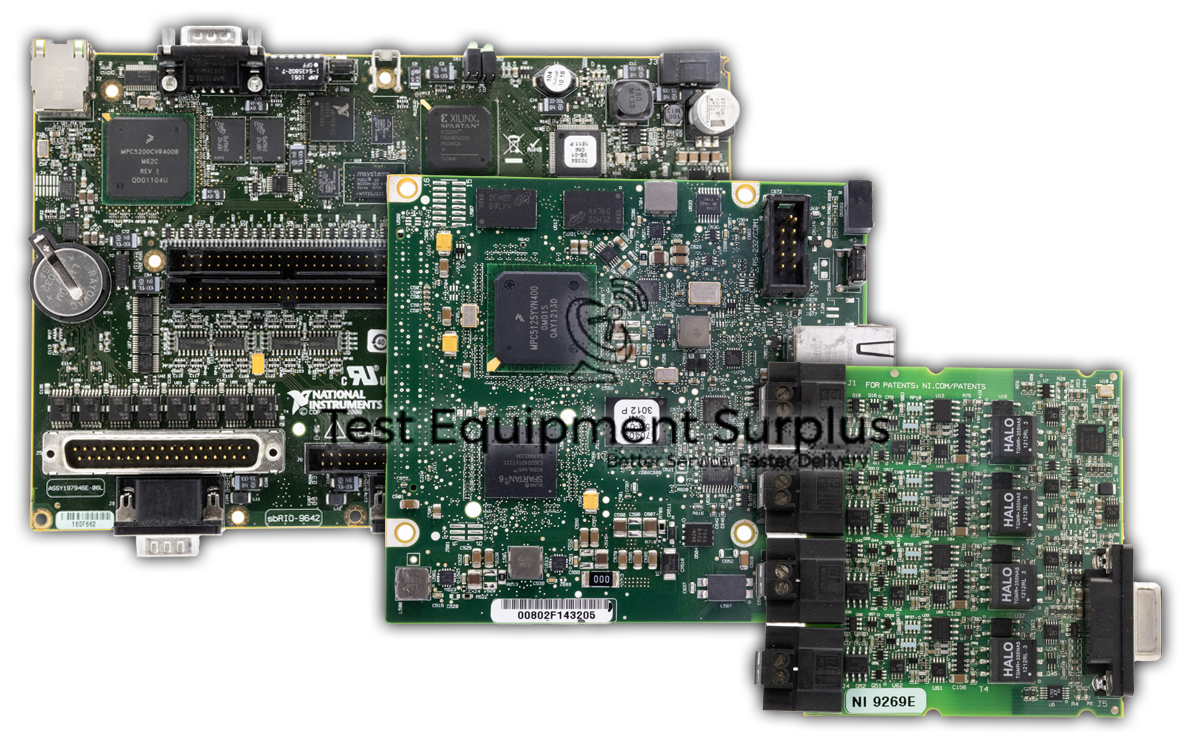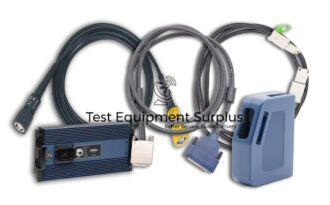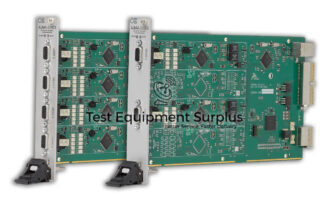Description
The National Instruments sbRIO-9627 is a CompactRIO Single-Board Controller with part numbers 783817-01 for the development kit version and 783817-02 for the standard version. It requires various software such as NI CompactRIO Device Drivers from August 2015 or later, LabVIEW 2015 or later, along with the corresponding LabVIEW FPGA and Real-Time Modules. The controller is equipped with a Zynq-7020 FPGA and operates with an ARM Cortex-A9 architecture.
It boasts a memory size of 512 MB and a matching DRAM size, along with a CPU speed of 667 MHz. For interfacing, it offers 16 analog inputs and 4 analog outputs, both with 16-bit resolution, in addition to 100 digital I/O lines. The sbRIO-9627 has a maximum power consumption of 28 Watts and includes a RIO Mezzanine Card (RMC) connector for expandability.
| Specification | Detail |
|---|---|
| Part Number | sbRIO-9627 |
| Part Numbers (Development Kit) | 783817-01 |
| Part Numbers (Non-Development Kit) | 783817-02 |
| Manufacturer | National Instruments |
| Required Software | NI CompactRIO Device Drivers August 2015 or later, LabVIEW 2015 or later, LabVIEW FPGA Module 2015 or later, LabVIEW Real-Time Module 2015 or later |
| FPGA | Zynq-7020 |
| CPU Architecture | ARM Cortex-A9 |
| Memory Size | 512 MB |
| DRAM Size | 512 MB |
| CPU Speed | 667 MHz |
| Analog Inputs | 16 (16-bit resolution) |
| Analog Outputs | 4 (16-bit resolution) |
| Digital I/O Lines | 100 |
| Power Consumption (Max) | 28 Watt |
| RIO Mezzanine Card (RMC) Connector | Yes |
Question 1: What software is required to operate the National Instruments sbRIO-9627, and what are the specifications of its FPGA and CPU architecture?
Answer 1: The difference in part numbers between the development kit and standard versions of the National Instruments sbRIO-9627 Single-Board Controller is that the development kit version has the part number 783817-01, while the standard version has the part number 783817-02.
Question 2: What is the difference in part numbers between the development kit and standard versions of the National Instruments sbRIO-9627, and what are their CPU speed and maximum power consumption?
Answer 2: The development kit version of the National Instruments sbRIO-9627 has the part number 783817-01, while the standard version has the part number 783817-02; both versions have a CPU speed of 667 MHz and a maximum power consumption of 28 Watts.
Question 3: What are the system requirements and specifications for the National Instruments sbRIO-9627 CompactRIO Single-Board Controller?
Answer 3: The National Instruments sbRIO-9627 is built on an ARM Cortex-A9 CPU architecture and features a Zynq-7020 FPGA, 512 MB of memory, 16 analog inputs, 4 analog outputs with 16-bit resolution, 100 digital I/O lines, and a RIO Mezzanine Card connector for expansion. Its software requirements include NI CompactRIO Device Drivers from August 2015 or later, LabVIEW 2015 or later, and the corresponding Lab
Question 4: What is the CPU architecture of the National Instruments sbRIO-9627, and what are its main features and software requirements?
Answer 4: The National Instruments sbRIO-9627 requires the NI CompactRIO Device Drivers from August 2015 or later, LabVIEW 2015 or later, and the corresponding LabVIEW FPGA and Real-Time Modules for operation. Its FPGA is a Zynq-7020, and the CPU is based on an ARM Cortex-A9 architecture.
Question 5: What is the difference in part numbers between the development kit and standard versions of the National Instruments sbRIO-9627 Single-Board Controller?
Answer 5: The National Instruments sbRIO-9627 CompactRIO Single-Board Controller requires NI CompactRIO Device Drivers from August 2015 or later, LabVIEW 2015 or later, and the corresponding LabVIEW FPGA and Real-Time Modules. It features a Zynq-7020 FPGA, an ARM Cortex-A9 architecture, 512 MB of memory and DRAM, a CPU speed of 667 MHz, 16 analog inputs, 4 analog outputs with 16-bit resolution,




